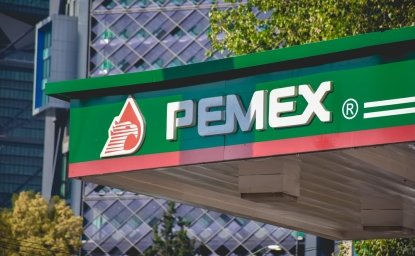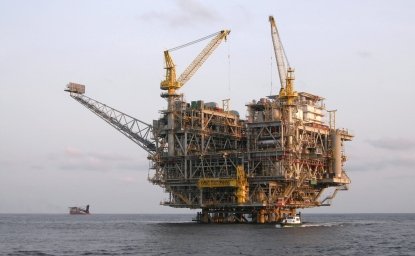Mexico’s Energy Reform: entering the final phase
By Pedro Valenzuela* and Duncan Wood**
On Monday August 11, Mexican President Enrique Peña Nieto enacted the secondary legislation of the energy reform, composed of 9 new laws and amendments to 12 existing ones. With this action, a new chapter in the economic development of Mexico begins in which the private sector will be allowed to invest in various areas related to the exploration for and exploitation of natural resources such as oil and gas.
However, this is just the beginning of a reform whose complexity is equal to its importance. In fact, several of the speeches on August 11, including Peña Nieto’s, highlighted the many issues that are still unresolved in order for this reform to impact positively in the government, the private sector, and citizens. With this in mind, the President ended his speech with 10 immediate actions to be performed in the context of the energy reform:
1. On Wednesday August 13, the Energy Ministry will announce the results of the "Round Zero," through which it will be determined which production fields Petróleos Mexicanos (PEMEX) is allowed to operate exclusively or in collaboration with private actors.
2. This Wednesday, the Ministry of Energy and PEMEX will publish the areas to be included in the first bidding round for exploration and exploitation of hydrocarbons during the first trimester of 2015. With that, the so-called "Round One" will initiate. This will include the areas in which PEMEX has decided to enter into joint ventures (profit and production sharing) and other contracts with private sector firms.
3. In late August, the National Energy Control Center (CENACE) and the National Center for Control of Natural Gas (CENAGAS) will be created. These agencies are created to regulate the electricity and gas markets, respectively; including their distribution, transportation, and sale. Their creation takes important functions away from the Comisión Federal de Electricidad (CFE) and PEMEX, and will allow for a market to function in both electricity and gas sectors.
4. In late August, the nominations for members of the various regulatory agencies will be sent to the Senate for its approval. Among others, the proposals will cover: members of the councils of the National Hydrocarbons Commission (CNH) and the Energy Regulatory Commission (CRE), independent advisors for PEMEX and CFE and the independent members of the Mexican Petroleum Fund. This process will be watched carefully by many as the health of the regulatory bodies is seen as being of vital importance in securing the stability and efficiency of the sector.
5. In September, five different funds will be created, including the Mexican Petroleum Fund, which will act as a long-term stabilization tool for public finances. In addition, there will be a fund directed to domestic producers in order to promote the development of national suppliers and contractors for the energy sector and a fund to ensure electricity service throughout the country. The government has placed significant political capital in the Mexican Petroleum Fund as a way of neutralizing large capital inflows, and in making sure that there is a positive intergenerational impact from the development of the sector.
6. In September, an educational program will be presented to promote human resources training in the field of hydrocarbons including scholarships for Mexican students interested in the field. This issue is seen as being of crucial importance in the Mexican energy sector as it is widely expected that the sector will experience severe shortages of human capital.
7. In October, the government will announce the new regulations that will govern the sector. This will require much effort from various federal agencies to adapt to their new roles as well as from regulators to quickly review and approve the proposed changes. Like the nominations process for the CRE and the CNH, this announcement will be of enormous interest to private companies and to PEMEX and CFE as they determine the new rules of the game. Potential investors will weigh the regulations against international regulatory benchmarks to determine the competitiveness of the investment environment in Mexico.
8. In October, the Mexican Petroleum Institute (IMP) will start its restructuring as it aims to become the main agency for research and development of the industry. For many years, the IMP has been underfunded and neglected by successive governments, and it is seen as a matter of crucial importance that the Institute is re-launched and adequately resourced.
9. In October, the guidelines for issuing the clean energy certificate will be issued. These certificates are an integral element of the government’s renewable energy and climate change strategies and will function in a similar fashion to the California Renewable Energy Certificates, creating a secondary market in carbon credits.
10. Finally, in the next three months, the new Agency of Industrial Safety and Environmental Protection in the Oil and Gas Sector (ANSIPMA) will be created. The new agency will be responding to the Environmental Ministry (SEMARNAT) and will be responsible for policing the sector. Many observers are keenly following this development, particularly as it pertains to deep water exploration and production in the Gulf of Mexico.
These ten actions are just the first steps to implement the energy reform and will largely determine its scope and success because they will set the rules and the actors that will be allowed to intervene in the sector. First, for both critics and enthusiasts of the reform, these changes will clarify in which areas private investment could appear and thus it will become clearer how much the Mexican government is willing to share both risks and revenues derived from the exploitation of hydrocarbons.
Second, the government has stressed that these new institutions are created and others are strengthened with the objective of increasing accountability and preventing abuses and corruption. By itself, this is one of the fundamental challenges of this reform and, in general, of the entire Mexican institutional framework, and it will be a mammoth task for the government. Third, with the creation of the funds, the Mexican government is signaling the international markets that it has a long-term stability in public finances, consolidating the position of Mexico as a good option to invest in.
The pace of the schedule has come as somewhat of a surprise for many observers who were frustrated by the length of the legislative process. The deliberation in the Mexican Congress, however, should instead be seen as a reflection of the importance attached to the democratic process in modern Mexico.
The government of President Peña Nieto has emphasized that the goal of these measures is to give more transparency to all the processes in the sector, to provide legal certainty to the private sector, and to gain confidence in the markets for the first bidding round in 2015. Nonetheless, it is now imperative that the government delivers on its promises to meet deadlines, at the same time as it ensures that procedures, regulations and institutions are crafted to the highest possible standards.
*Pedro Valenzuela is a Research Intern with the Mexico Institute and a M.A. student at Georgetown University.
**Duncan Wood is the Director of the Mexico Institute at the Woodrow Wilson International Center for Scholars.






